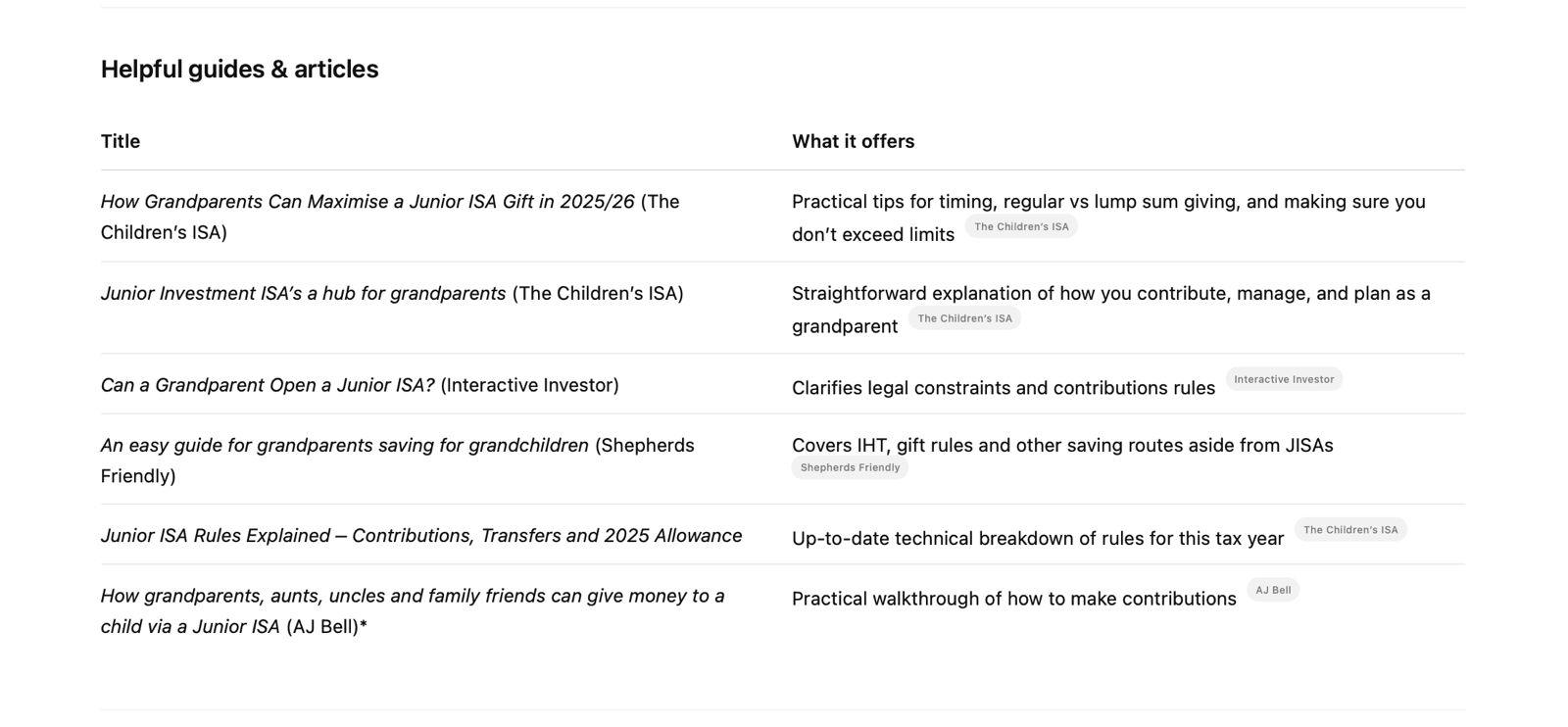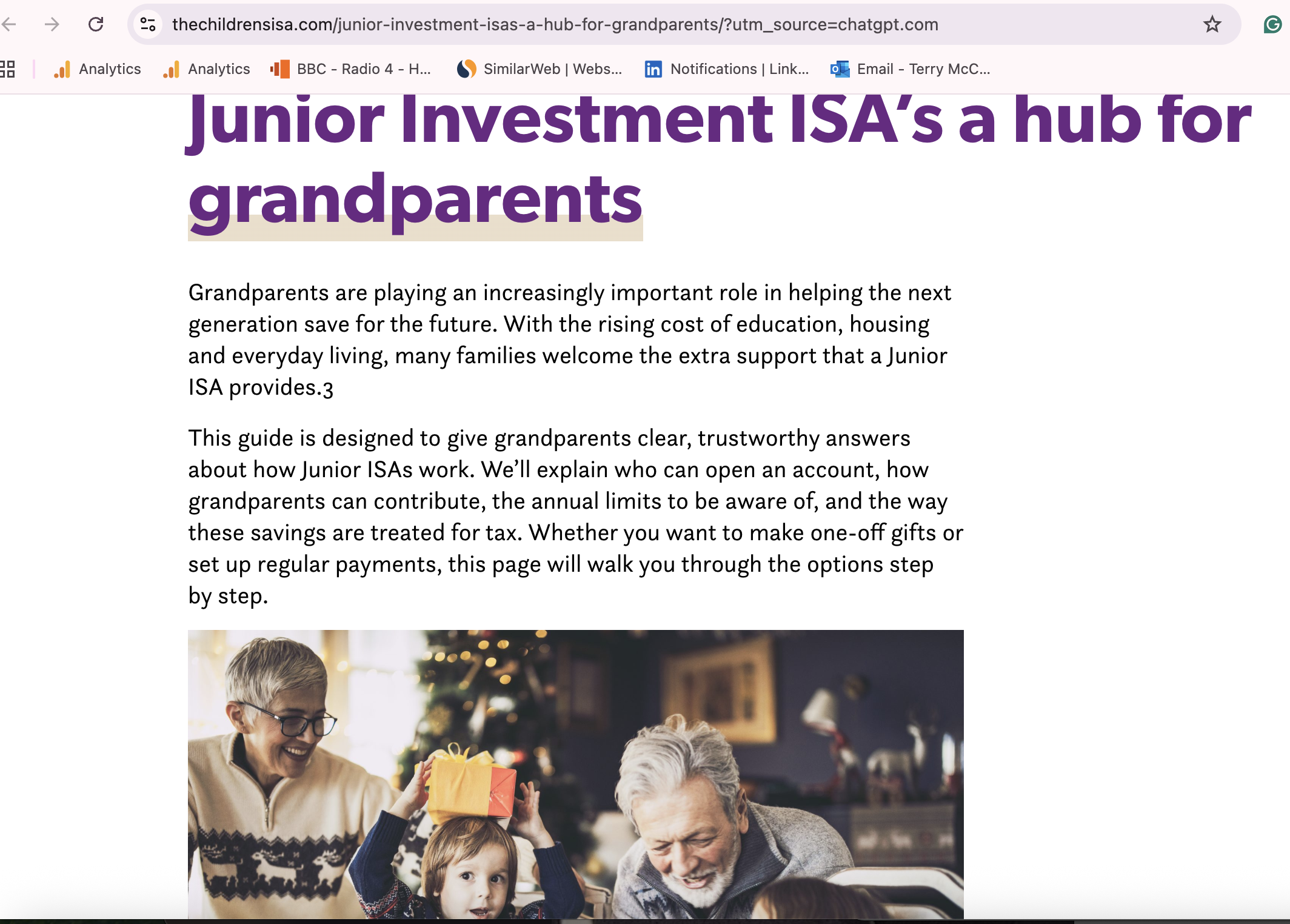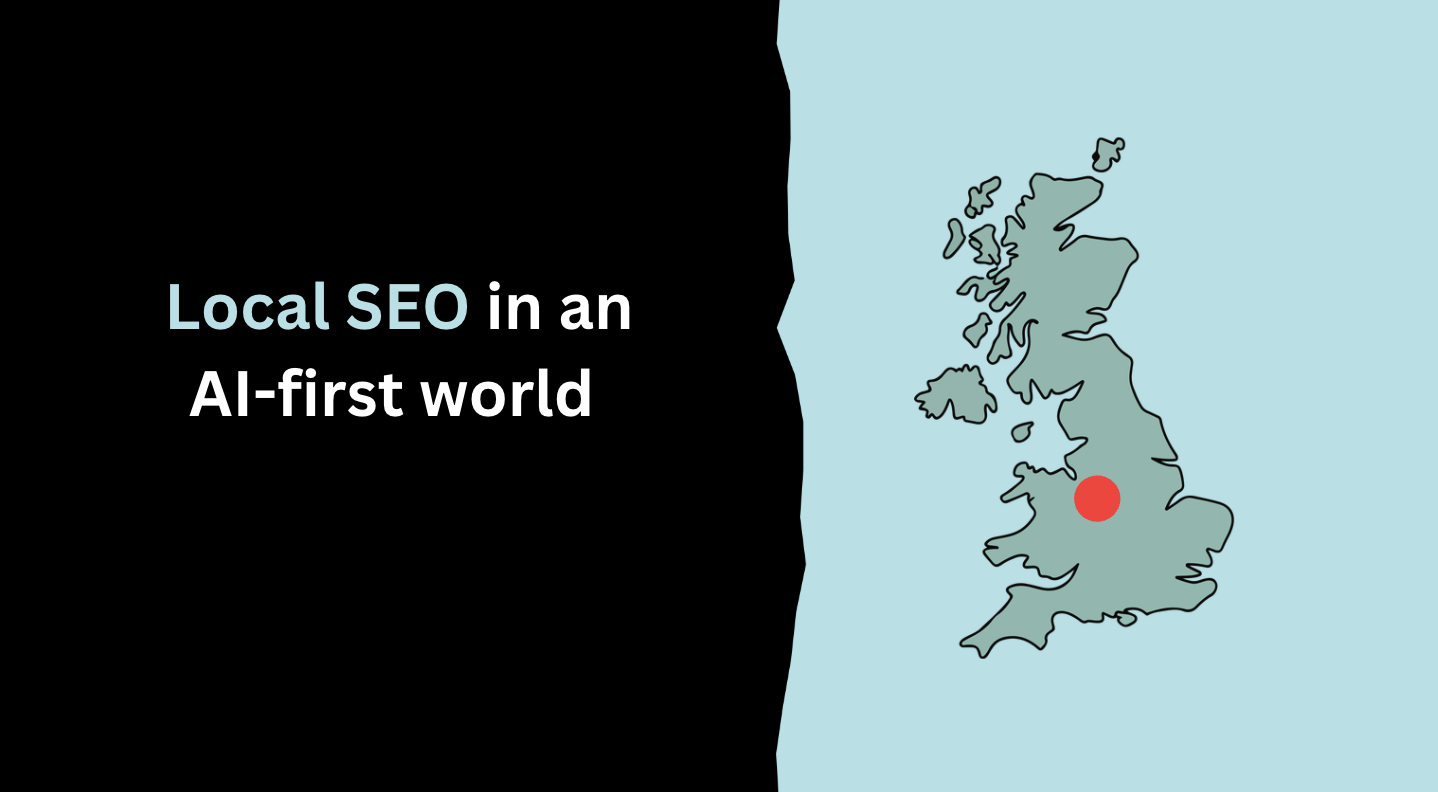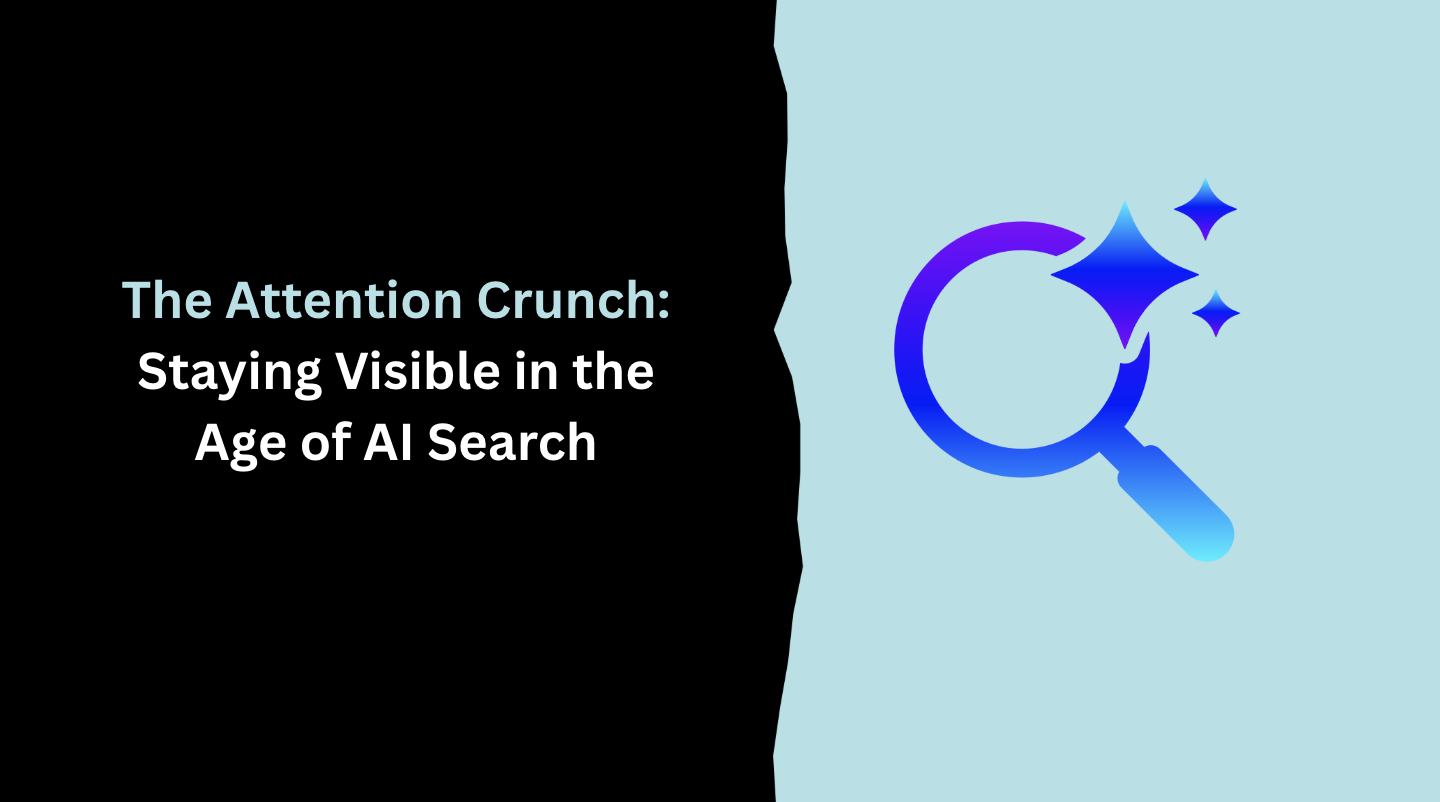From SEO to AEO: How Answer Engine Optimisation is Shaping the Future of Search
A case study in GEO (with empirical results)

Table of Contents
Search marketing has spent decades in thrall to the blue link. Rankings, meta titles, and technical optimisation all existed to persuade Google to surface content at the top of its ten-blue-links layout. But with generative AI models now serving as the first stop for many users, the definition of “visibility” has shifted.
At SearchUp, we’ve been testing how content appears not just in Google’s index, but in large language models (LLMs) themselves. Our client, The Children’s ISA, has traditionally performed well for queries around grandparents contributing to a Junior ISA. The question was whether those same strengths in SEO would carry weight in an LLM environment.
The Experiment
Rather than publishing a conventional blog, we built a dedicated standalone page focused solely on “Junior ISAs for grandparents.”
The page was designed with classic SEO rigour:
- Structured data to signal meaning
- A sharply defined META title and description
- Tagging that mirrored search intent
- Clear, factual copy aligned to E-E-A-T principles
The difference was that this wasn’t conceived as a “content piece.” It was positioned as an authoritative, standalone page, designed to answer a single question comprehensively.
Within a week, we saw the payoff: the page surfaced directly in a large language model’s generated answers. I asked ChatGPT for a guide to Junior ISA's for grandparents. The page we published the previous week was called "Junior Investment ISA's a hub for grandparents".

The Result
This matters because it suggests a blurring of lines between search engine optimisation (SEO) and what we might call answer engine optimisation (AEO) — or even generative engine optimisation (GEO).
If LLMs are trained to serve accurate, structured, trustworthy content, then pages designed for search engines, when executed properly, are also highly eligible to be featured in AI-driven answer engines.
The test reinforces a simple conclusion:
Good SEO = good AEO.

Why It Matters
Marketers often overcomplicate the shift from search to generative. The fear is that SEO tactics will be rendered obsolete. In practice, the fundamentals; clarity, structure, authority are transferable.
- Structured data makes content machine-readable, whether by Googlebot or GPT.
- META precision signals relevance to both search engines and answer engines.
- Standalone pages that answer single questions comprehensively map neatly onto the way LLMs respond to user prompts.
The lesson? Optimise for people, but never neglect the machine’s need for structure. When you do that well, your content serves both.
What Comes Next
Answer engines will continue to evolve, but the connective tissue between SEO and AEO is already visible. For marketers, this means:
- Think beyond the blog: not every piece of content needs to be longform. Standalone, focused answers carry weight.
- Invest in structure: schema, tagging, and hierarchy are more valuable than ever.
- Prioritise authority: in both search and AI, unverified or vague content will be ignored.
The future of visibility won’t just be about ten blue links. It will be about whether your content is authoritative enough to be quoted back to a user by the machine itself.
And as our the Children’s ISA experiment showed, good SEO principles are already the foundation for this new era.
Get in touch today
complete the form below for an informal chat about your business







